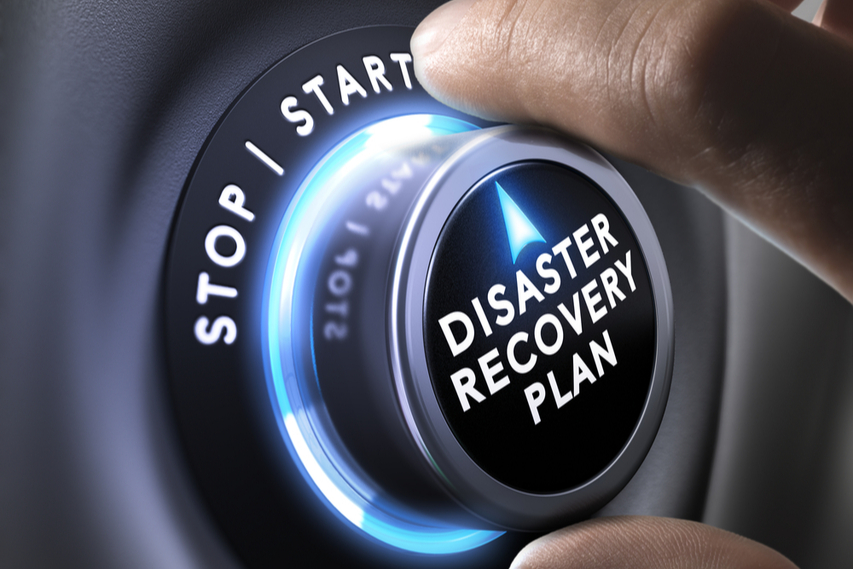
Disasters are becoming more common with time. It is very difficult to escape the damage caused by these disasters. Natural disasters can happen in every U.S state. These disasters can completely disrupt your business. More than 40% of SMBs close after a natural disaster. You need to ensure that you can keep your systems and server running during the event of a disaster. Natural disasters can completely destroy their business. You also need to protect your business from security breaches, theft, data loss, and ransomware attacks. In this article, we are going to share some key elements that will help you in creating your Disaster Recovery Plan.
-
Comprehensive Inventory
Your disaster recovery plan should include a complete inventory of hardware, applications, and software that you are using. It is important to prioritize your inventory according to their importance. You should first restore the resources that are on the top of this list. Make sure to include all the important information about the equipment like contact information, technical support information, and serial numbers. You should also develop a list of passwords that you are using for accessing your data backups, CRM systems, and cloud-based solutions.
-
Clear Roles and responsibilities
Your employees should know about their roles during a natural disaster. You should identify people that will be responsible for executing your disaster recovery plan. They should be familiar with your DR plan. You need to find people who will be responsible for getting your systems back up. Also, you need to find people that will talk with media or law enforcement. You should create a list of these individuals. Make sure to include the name of your employee on this list. This will ensure that there isn’t any ambiguity in your plan. You should have the phone numbers and email addresses of these employees.
-
Communication Plan
First, you should ensure that everyone knows about their roles and responsibilities. After that, you should work on creating a communication plan. Your team can use this communication plan for communicating with each other. During a natural disaster, you can’t use the usual modes of communication for communicating with your team. If regular modes of communication are unavailable, then how will you communicate with your customers and employees? You need to create a procedure for solving this problem. Your email and phone lines might be down during the disaster. Thus, you should work on creating a backup plan for dealing with this problem.
You should update your plans on your website or online portals. This will ensure that your customers know about your next steps. Many businesses are also setting up private Whatsapp and social media groups for their recovery team. Communication is the most important thing during a disaster. Thus, you should ensure that your entire workforce can communicate with each other.
-
Determine your tolerance level
You should determine your Recovery point objective or RPO. RPO will help you in determining the amount of data that your business can afford to lose. Similarly, you need to determine your Recovery time objective or RTO. RTO will help you in determining the downtime that your business can afford. These factors will actually depend on your industry. If you are heavily dependent on technology, then you can’t afford downtime. You should look for processes and technologies that will help you in keeping your downtime within the boundaries. RTO and RPO will act as the boundaries that you have set.
-
Document your plan
First, you should define your RTO and RPO. You should also look for solutions that will help you in recovering your systems. It is important to document a plan that will help you in recovering your plans. This plan should contain all the important information like when will you alert your staff and customers. You need to define your worker roles in this plan. This is going to be a tedious task for you. But, it will be very important for your organization during the disaster.
-
Expectations for Managed IT Service Providers
You should check the SLAs or Service Level agreements of your vendor. Check if they can provide assistance during a disaster. If you are working with managed IT providers, then you should ensure that they will be always available. They should help you in resolving all your IT problems quickly. This will help you in creating an ultimate recovery strategy.
-
Regular Testing and Reviews
You should regularly review and test your disaster recovery plan after creating it. Check if all the people mentioned in your list are still available. If some important employee has left your company, then you should look for a new employee. Also, you should check if someone has changed the passwords. You might be working with a new MSP. Companies are always installing new technology in their systems. If you have not listed the current information, then your entire plan will fail.
Make sure that your employees know about their roles. You can schedule practice drills for your employees. These drills are going to be similar to fire drills. If your employees are not regularly practicing your disaster recovery plan, then they will forget about their roles.
Conclusion
There are many more things involved in a disaster recovery plan. These points will help you in understanding the importance of a disaster recovery plan. If you have a disaster recovery plan, then you can quickly recover from a disaster. It will help you in protecting your business from system failure. Disasters like ransomware attacks, hardware failure, floods, and earthquakes can affect your business operations. Experienced MSP like Bleuwire can help you in assessing your needs. They will help you in creating an effective DR plan. This will ensure that your business can survive every disaster. If you need more tips regarding the Disaster Recovery plan, then you can contact Bleuwire.
Contact us today to learn about Bleuwire™ services and solutions in how we can help your business.





